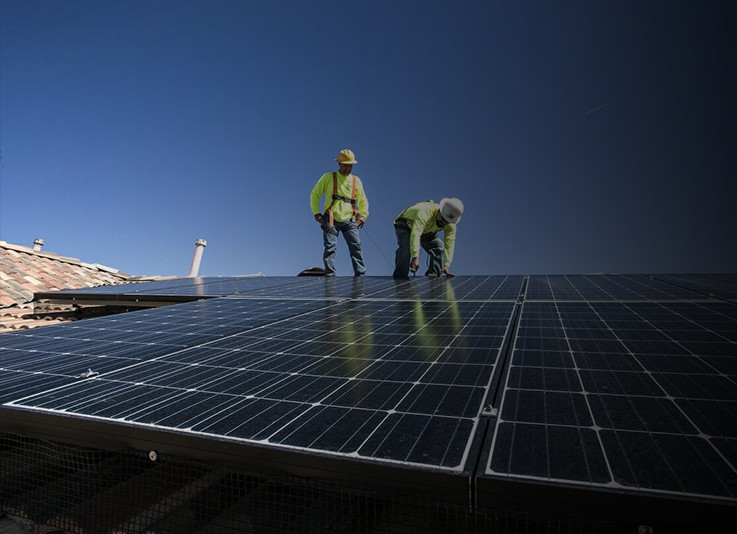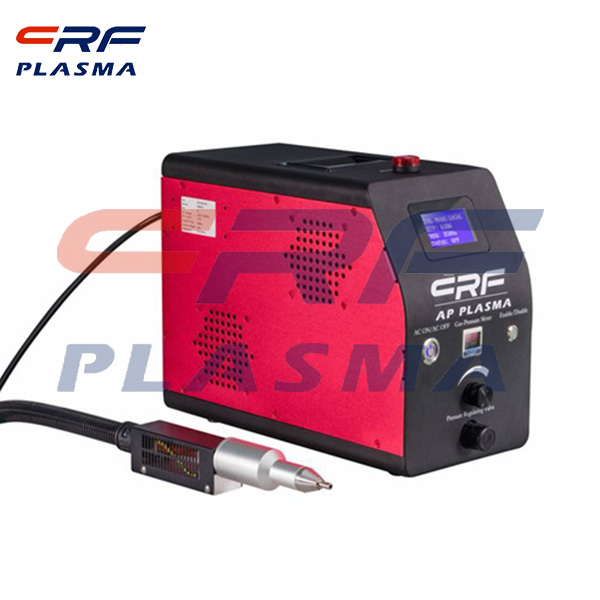
Welcome to Shenzhen Sing Fung Intelligent Manufacturing Co., Ltd.
E-mail:shaobo@sfi-crf.com
Application of plasma cleaning machine in packaging plasma coating process
- Categories:Industry News
- Author:plasma cleaning machine-surface treatment equipment-CRF plasma machine-Sing Fung Intelligent Manufacturing
- Origin:
- Time of issue:2020-11-10
- Views:
(Summary description)Silica can be obtained by oxidizing silica vapor in an oxygen plasma. The anodic arc process USES consumable silicon metal placed in a furnace as the anode for the vacuum arc. If a DC voltage of 20~30V is applied between the metal cathode and the furnace, continuous arc discharge will occur between the cathode and anode as long as there is a vapor mass in front of the cathode. This discharge can produce a highly active plasma in a vacuum furnace, at which point the silicon atoms in the highly excited state are vaporized and move towards the packaging substrate, which rotates continuously on the upper part of the vapor cloud. At this point, if oxygen is added to the steam, a layer of silica will be deposited on the surface of the encapsulated substrate. The polymerization process is the process of forming organic or inorganic polymer coating on the substrate. The process belongs to the category of plasma enhanced chemical vapor deposition. In the PECVD process, the vapor containing the required components is introduced into the plasma. The electrons in the plasma ionize the molecules or decompose them into free radicals. The generated active molecules can undergo chemical reactions on the surface or in the gas phase environment and form thin films through deposition. The nucleation process depends on the appearance of the material surface and whether there are foreign atoms on the surface. The dense film produced by the above process is hydrophobic and has no pores. However, in order to produce high quality films in a short time, process parameters must be optimized, especially in the application of barrier layers. Organosilicon films can be obtained by cracking organosilicon resins in a plasma environment. If the silicon atoms react with oxygen, nitrogen or their mixture of gases, silica, silicon oxide or silicon nitride films can be deposited. Organic gases such as acetylene are used as the precursor reactants of diamond-like carbon films. Compared with the traditional chemical vapor deposition (CVD) process, the plasma pulsed CVD process is an improved one. Pulsed plasma can be generated by applying a pulsed signal to a power source (usually a radio frequency or microwave power source). Pulsed plasma allows ions to have lower energy in the packaging coating process. The coating is gradually thickened through a series of small-scale treatments to form a highly dense and uniform coating. In addition, the chemical composition of the reaction mixture can be changed between the two pulses. Therefore, multiple layers of different properties can be coated in the same process operation, resulting in customized multi-layer coating systems. Using plasma chemical vapor deposition of silicon dioxide and titanium dioxide prepared by coating technology has been widely used in all kinds of plastic surface modification, terephthalic acid glycol polyester (PET) and poly (methyl methacrylate (PMMA), polycarbonate (PC), copolymerization cyclic olefin (COC), polypropylene (PP) and high-density polyethylene (HDPE)) of the surface modification.
Application of plasma cleaning machine in packaging plasma coating process
(Summary description)Silica can be obtained by oxidizing silica vapor in an oxygen plasma. The anodic arc process USES consumable silicon metal placed in a furnace as the anode for the vacuum arc. If a DC voltage of 20~30V is applied between the metal cathode and the furnace, continuous arc discharge will occur between the cathode and anode as long as there is a vapor mass in front of the cathode. This discharge can produce a highly active plasma in a vacuum furnace, at which point the silicon atoms in the highly excited state are vaporized and move towards the packaging substrate, which rotates continuously on the upper part of the vapor cloud. At this point, if oxygen is added to the steam, a layer of silica will be deposited on the surface of the encapsulated substrate.
The polymerization process is the process of forming organic or inorganic polymer coating on the substrate. The process belongs to the category of plasma enhanced chemical vapor deposition. In the PECVD process, the vapor containing the required components is introduced into the plasma. The electrons in the plasma ionize the molecules or decompose them into free radicals. The generated active molecules can undergo chemical reactions on the surface or in the gas phase environment and form thin films through deposition. The nucleation process depends on the appearance of the material surface and whether there are foreign atoms on the surface. The dense film produced by the above process is hydrophobic and has no pores. However, in order to produce high quality films in a short time, process parameters must be optimized, especially in the application of barrier layers. Organosilicon films can be obtained by cracking organosilicon resins in a plasma environment. If the silicon atoms react with oxygen, nitrogen or their mixture of gases, silica, silicon oxide or silicon nitride films can be deposited. Organic gases such as acetylene are used as the precursor reactants of diamond-like carbon films.
Compared with the traditional chemical vapor deposition (CVD) process, the plasma pulsed CVD process is an improved one. Pulsed plasma can be generated by applying a pulsed signal to a power source (usually a radio frequency or microwave power source). Pulsed plasma allows ions to have lower energy in the packaging coating process. The coating is gradually thickened through a series of small-scale treatments to form a highly dense and uniform coating. In addition, the chemical composition of the reaction mixture can be changed between the two pulses. Therefore, multiple layers of different properties can be coated in the same process operation, resulting in customized multi-layer coating systems. Using plasma chemical vapor deposition of silicon dioxide and titanium dioxide prepared by coating technology has been widely used in all kinds of plastic surface modification, terephthalic acid glycol polyester (PET) and poly (methyl methacrylate (PMMA), polycarbonate (PC), copolymerization cyclic olefin (COC), polypropylene (PP) and high-density polyethylene (HDPE)) of the surface modification.
- Categories:Industry News
- Author:plasma cleaning machine-surface treatment equipment-CRF plasma machine-Sing Fung Intelligent Manufacturing
- Origin:
- Time of issue:2020-11-10 09:28
- Views:
Application of plasma cleaning machine in packaging plasma coating process:
Silica can be obtained by oxidizing silica vapor in an oxygen plasma. The anodic arc process USES consumable silicon metal placed in a furnace as the anode for the vacuum arc. If a DC voltage of 20~30V is applied between the metal cathode and the furnace, continuous arc discharge will occur between the cathode and anode as long as there is a vapor mass in front of the cathode. This discharge can produce a highly active plasma in a vacuum furnace, at which point the silicon atoms in the highly excited state are vaporized and move towards the packaging substrate, which rotates continuously on the upper part of the vapor cloud. At this point, if oxygen is added to the steam, a layer of silica will be deposited on the surface of the encapsulated substrate.
The polymerization process is the process of forming organic or inorganic polymer coating on the substrate. The process belongs to the category of plasma enhanced chemical vapor deposition. In the PECVD process, the vapor containing the required components is introduced into the plasma. The electrons in the plasma ionize the molecules or decompose them into free radicals. The generated active molecules can undergo chemical reactions on the surface or in the gas phase environment and form thin films through deposition. The nucleation process depends on the appearance of the material surface and whether there are foreign atoms on the surface. The dense film produced by the above process is hydrophobic and has no pores. However, in order to produce high quality films in a short time, process parameters must be optimized, especially in the application of barrier layers. Organosilicon films can be obtained by cracking organosilicon resins in a plasma environment. If the silicon atoms react with oxygen, nitrogen or their mixture of gases, silica, silicon oxide or silicon nitride films can be deposited. Organic gases such as acetylene are used as the precursor reactants of diamond-like carbon films.
Compared with the traditional chemical vapor deposition (CVD) process, the plasma pulsed CVD process is an improved one. Pulsed plasma can be generated by applying a pulsed signal to a power source (usually a radio frequency or microwave power source). Pulsed plasma allows ions to have lower energy in the packaging coating process. The coating is gradually thickened through a series of small-scale treatments to form a highly dense and uniform coating. In addition, the chemical composition of the reaction mixture can be changed between the two pulses. Therefore, multiple layers of different properties can be coated in the same process operation, resulting in customized multi-layer coating systems. Using plasma chemical vapor deposition of silicon dioxide and titanium dioxide prepared by coating technology has been widely used in all kinds of plastic surface modification, terephthalic acid glycol polyester (PET) and poly (methyl methacrylate (PMMA), polycarbonate (PC), copolymerization cyclic olefin (COC), polypropylene (PP) and high-density polyethylene (HDPE)) of the surface modification.

Scan the QR code to read on your phone

TEL:0755-3367 3020 / 0755-3367 3019

E-mail:sales-sfi@sfi-crf.com

ADD:Mabao Industrial Zone, Huangpu, Baoan District, Shenzhen


















